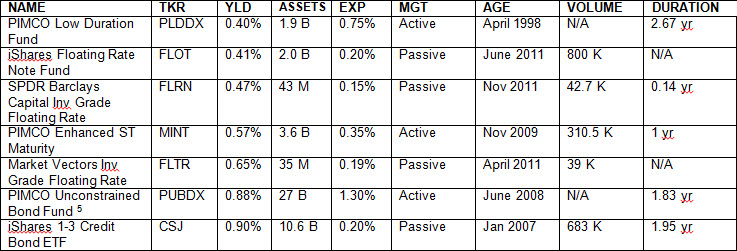In my work writing for the MarketTamer blog, I have discovered that “inspiration” can come in many forms – some stranger than others. Over the weekend, as I trolled through several hundred email messages[1], I ran across two eye-catching “headlines”: 1) “’Earn’ 60% on your money!” (it was a blatantly deceptive “lure” to get me to access the related hyperlink – leading me to an offer to subscribe to a service at a 60% discount – my stomach turned); and 2) “Invest Like a Billionaire”. The latter article was at least somewhat respectable; but it was built upon an extremely shaky premise – ie. asking what Paris Hilton had in common with John Pierpont Morgan and Carl Icahn. For me the answers that leapt to mind most immediately focused strictly upon the innumerable things they do not have in common — thereby missing the author’s intention to draw our attention to the profitability of private company investment. Of course, the author went on to point out that, for the “average” investor, investment in a private company is most effectively done through done through a “business development companies” (BDC). Someday soon I’ll write about some BDC’s. But that headline actually drew my attention toward a different, but related story about which I read this past Saturday. The story reported on a recent study of millionaires, their money, and their investments!
The just published study results (entitled “What is Wealthy?” ) – came from UBS Wealth Management Americas. The study is based on a survey that involved over 4,000 U.S. investors (over age 25) with significant investable assets. My reaction to the survey results resonant perfectly with the observation offered by the head of investor insights at UBS, Emily Pachuta: “To us, the surprise was that many people with $1 million or more did not consider themselves wealthy. We think it shows a very interesting mindset shift. People have certainly experienced a shock from the volatility of the market…”
Separately, when responding to questions arising from this survey, the Pulitzer Prize-winning author of books in the business arena, David Cay Johnson, said he was not surprised by the results and offered these thoughts: “Handling assets and understanding what they are is a skill very few people have. To most people, money is a stream and not a pool of assets.”[2]
The sections of the UBS survey that I found absolutely stunning were the following:
1) 70% of those with at least $1 million in hand do not feel they qualify as “wealthy”;
2) What is the primary criteria by which one can know that she/he is “wealthy”?
a. The survey group identified “having no financial constraints on what I do” as the chief criteria for “wealthy”.
3) In light of that, poll respondents identified $5 million as the new threshold for “wealthy” status.
Let’s take a moment for a reality check here. According to May, 2013 data, median U.S. household income was $51,500 and the average 401(k) account holds a balance of around $80,000. I dare say that those Americans whose income and/or assets fall around those levels would definitely identify a millionaire as “wealthy”. Even more obvious, a huge majority of persons around the world would feel they “died and went to heaven” if they suddenly had control over $1 million or more – especially if they live in one of the world’s “developing nations”.
But let me alert you that if you think the above are the most surprising insights from the survey – guess again! The survey’s published report reveals that millionaires’ actual financial behavior is often at odds with the verbalized concerns they express regarding money and economic trends. Specifically, the report reveals that:
1) Poll respondents were broadly concerned about the negative effects of inflation; and
2) They were concerned regarding whether they would be able to afford future health care (as well as being anxious about their assets being depleted before they die).
Logic would dictate that these affluent investors would therefore do all they can to ensure the maximization of investment return within their given risk parameters, and at the very least earn more than the current inflation rate on their assets! However, we know that “logic” does not have a rock solid hold over our financial decisions – does it?!
In fact, this report reveals that millionaires may suffer an even larger disconnect between logic and their actual financial decisions than is true within our lives (the “non-millionaires”). What is at the root of this disconnect? Despite their concern about the ravages of inflation and the rapidly escalating cost of health care, the survey shows that the majority of poll respondents feel “more confident” about investing when they maintain 20% of their assets in cash!
All I can say is: “WOW! Unbelievable!” Think about the implications of this, my friends. The average millionaire (ranging in assets between $1 million and $5 millionaire) holds 20% in “cash” – currently earning “ZIRP” (nearly zero interest rate, in accord with the Fed’s “ZIRP” policy). That means that cash is literally “sitting on the sidelines” – losing buying power to inflation on a daily basis.
The MarketTamer Team has as its mission to educate investors so they will more clearly recognize counterproductive, financially damaging decisions such as that. So in an effort to educate (and help) them (as well as you), I will be covering some ways to invest cash in much more productive ways! I will also endeavor to make the accompanying risks clear, so that anyone who chooses to invest cash in one or more of these ways will be aware of potential risks, as well as potential rewards.[3]
To wrap up this first article, let’s consider the fixed income asset class that seems to have emerged as the most popular “money market substitute” (since the SEC continues to consider regulations that would introduce a “floating NAV structure” for money market funds). The common link among this seemingly disparate group of funds[4] is relatively short duration and a yield under 1% (but nonetheless much higher than paid currently by money market funds!). For purposes of the following table, I am going to sort them by yield, but I cannot emphasize enough that the order below absolutely does not imply any sort of preference for one fund over another!
What can we discern from the data above? The most “liquid” among them are FLOT, CSJ, and MINT. That means that for those ETFs, the bid/ask spread will be smallest and they will tend to offer you more (relative) price stability in any turbulent market condition. On the surface, at least, the one with the least “interest rate risk” is FLRN, due to its miniscule “Duration”. If expense ratios matter to you (I prefer to focus on performance) FLRN is the most “economical”. The choice that appears most “alluring” to me at this point is CSJ – due to its combination of generous short-term yield and high liquidity. However, many, many other people would shy away from CSJ and express a preference for any of the first five funds listed (note that PLDDX and PUBDX are mutual funds, while the others are ETFs). The one choice that requires “outside the box” thinking is PUBDX, which would not normally be considered in this “short term” category because it is more often a “long-term” vehicle. However (as implied by its title) the fund manager has free rein to skew maturity in whatever direction is most appropriate under any given market condition. Therefore it is currently skewed toward the “short” side of bond maturity.
As you view the comparative graph to the left, note that (as one would expect) all of these vehicles tend, over time, to move toward a common range of price performance (ie. they converge at the right side of the graph). The detail will be hard for you to discern, even if I offer a color “legend”. However, the two funds that diverge the most are FLTR (purple), and PUBDX (light blue). [5]
What does this mean for our “millionaire”? Although I understand their financial anxiety, I personally consider holding anywhere between $200,000 and $1,000,000 in cash (see earlier story detail) to be an obscene waste of an asset resource. Instead of doing that, if the millionaire was a client of a RIA who recommended investment in a “money market alternative” and the millionaire gave permission for such an allocation, this is what could result one year later (for illustrative purposes only):
I admit that, for a millionaire, $800 may not seem like much. However, they could always choose to donate such income to charity (or to me). In my opinion, whatever can be earned at very low relative risk is a much preferred outcome when compared to leaving a large sum in cash and (inevitably) losing value because of the negative impact of inflation!
INVESTOR TAKE AWAY: I must confess that I learned a lot by going through the time-consuming and often frustrating process of digging out fund metrics on my own. One thing I learned is that listening solely to so-called “experts” can leave you with (at best) some misconceptions and (at worst) some misinformation. I am now better informed and better equipped to maximize the power of my own “sideline cash”!! As Gareth, Ron, and Gregg remind us, “going to cash is always option” in our trading discipline, and is definitely preferable to a trade that has poor expectancy. However, while your cash is “sidelined”, you should find a good place for it to “work for you” and keep you ahead of inflation!
DISCLOSURE: the author owns MINT, FLOT, and PUBDX. This article is for educational purposes only and is not intended as a recommendation to buy or sell anything. Always consult with your own financial advisor before buying or selling securities.
Submitted by Thomas Petty MBA CFP
[1] Three years ago, I made the mistake of exposing myself to as much trading education as possible; the consequence is that my address has been sold to every “Tom, Dick, and Harry” trade educator that exists. My mail box overflows! I should have stuck strictly with Gareth and Ron!
[2] The italics and underlining are added by me for emphasis, not by Mr. Johnson!
[3] In case you are interested in performing a similar analysis to that which I just did on instruments with potential as viable investments with a high potential return/risk profile, you may want to know that I had to access multiple information sources in order to even come close to a basic cross section of essential metrics that are comparable across the board. The most difficult metrics to track down were: SEC 30 day yield (for some funds I could only find “Current Dist. Yield”), Duration, and Daily Volume (average). The data I offer you reflects “best efforts” rather than the precise data for which I had searched. I utilized Yahoo Finance, Google Finance, ETFb website, ETF Trends, and several fund family websites (eg. iShares, SPDR, PIMCO). Surprisingly, one of the most helpful sources of data was the “Research” section within Fidelity.com!! One more key point: different sites will provide slightly different metrics depending on the “date” of its data. I tried my best to draw out the best set of data.
[4] If you looked at just their names, a number of these funds would seemingly not appear to have much in common.
[5] The graph is created using YahooFinance.com
Related Posts
Also on Market Tamer…
Follow Us on Facebook



 1 Surprising Reason to Invest in XRP
1 Surprising Reason to Invest in XRP



